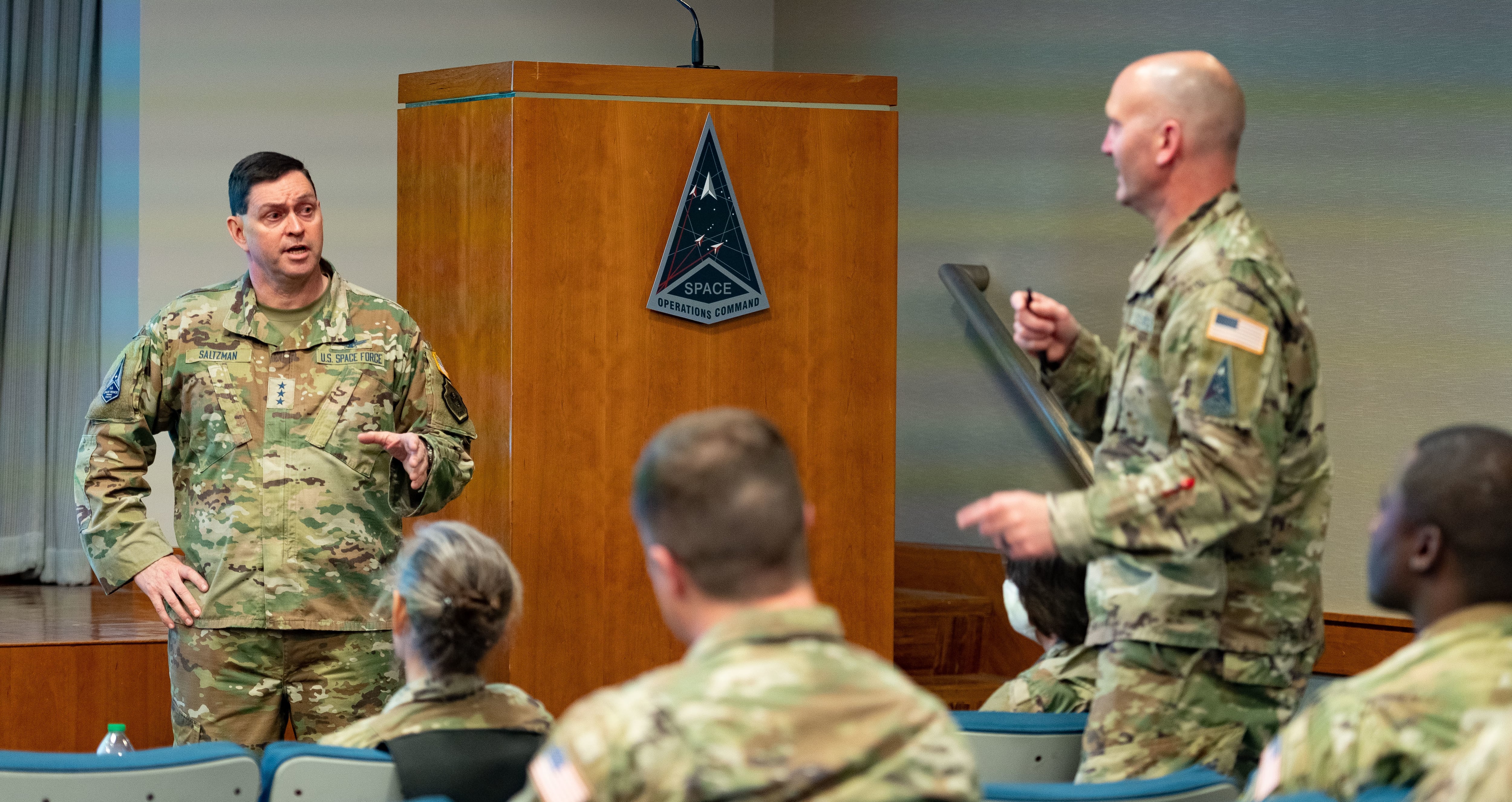WASHINGTON — The Space Force welcomed a new leader on Wednesday as the Department of Defense formally transitioned command of the service to Gen. Chance Saltzman.
During a ceremony at Andrews Air Force Base in Maryland, Saltzman took the reins from Gen. Jay Raymond, becoming just the second official to lead the young service. Speaking during the change of command, Air Force Secretary Frank Kendall praised Raymond for his ground-level work, calling him “the father of the Space Force.”
“The Space Force that I walked in on 15 months ago, the one that Gen. Saltzman will be stepping up to lead . . . is a living, breathing testament to the vision, professionalism and will to succeed that Gen. Raymond brought to his role as the first chief of space operations,” Kendall said.
Raymond, who is retiring from a 38-year military career, has served at the helm of the service since 2019, when Congress authorized it. At the time, he wore two hats, leading what was the military’s newest combatant command, U.S. Space Command. Prior to overseeing the two space organizations, he was head of Air Force Space Command for three years.
Defense Secretary Lloyd Austin said during the ceremony that Raymond’s leadership will leave a lasting impact on the Space Force.
“He laid the foundation for the culture and the traditions that will define the service for decades to come,” Austin said. “He did all of that, and he made it look easy.”
Saltzman most recently served as deputy chief of space operations, with a focus on the service’s cyber and nuclear forces. He joined the Air Force in 1991 and has experience as an intercontinental ballistic missile officer and a satellite operator for the National Reconnaissance Office and has held leadership roles within the Air Force and U.S. Central Command.
He’s taking charge as the Space Force is poised for growth in areas like readiness, system resilience and integration within the Defense Department. The service, armed with nearly 16,000 guardians and civilians and a $24 billion annual budget, may also be on the edge of a growth spurt as concerns about threats from China and Russia increase.
Recognizing that responsibility, Saltzman said today that continuing to build a resilient and capable force “will not be an easy or short-lived task.”
“A resilient, ready and combat-capable Space Force is indispensable to deterrence today, tomorrow and every day after that,” he said.
Space Force poised for growth
Raymond told C4ISRNET in a recent interview he expects that during Saltzman’s tenure, the service will need to consider whether it can continue to operate as a relatively lean organization. While the space domain is not as “manpower intensive” as others, he said the Space Force needs to make sure it has the “critical mass” to be effective, particularly at the headquarters level.
“At some point, there’s going to have to be some analysis that says, ‘Do we have this right? Do we have enough just to attend meetings and do the work that’s critical for our nation?’” he said.
The service is also moving toward a phase of deeper integration — with the other military services, international partners and internally, with its guard and reserve components — and is working to better define its metrics for preparing Guardians for space operations and ensuring its satellites and other systems are designed with resiliency in mind.
Reflecting on his three years as head of the Space Force, Raymond said he is surprised at what the service accomplished in a relatively short time frame and in the midst of a global pandemic. He highlighted the service’s designation as the space requirements lead for DoD, its professional development gains as areas of significant progress.
“I would have flunked the test if you’d told me what we were able to accomplish in there years,” Raymond said. “I didn’t think we would have gotten quite as far as we did.”
Courtney Albon is C4ISRNET’s space and emerging technology reporter. She has covered the U.S. military since 2012, with a focus on the Air Force and Space Force. She has reported on some of the Defense Department’s most significant acquisition, budget and policy challenges.








